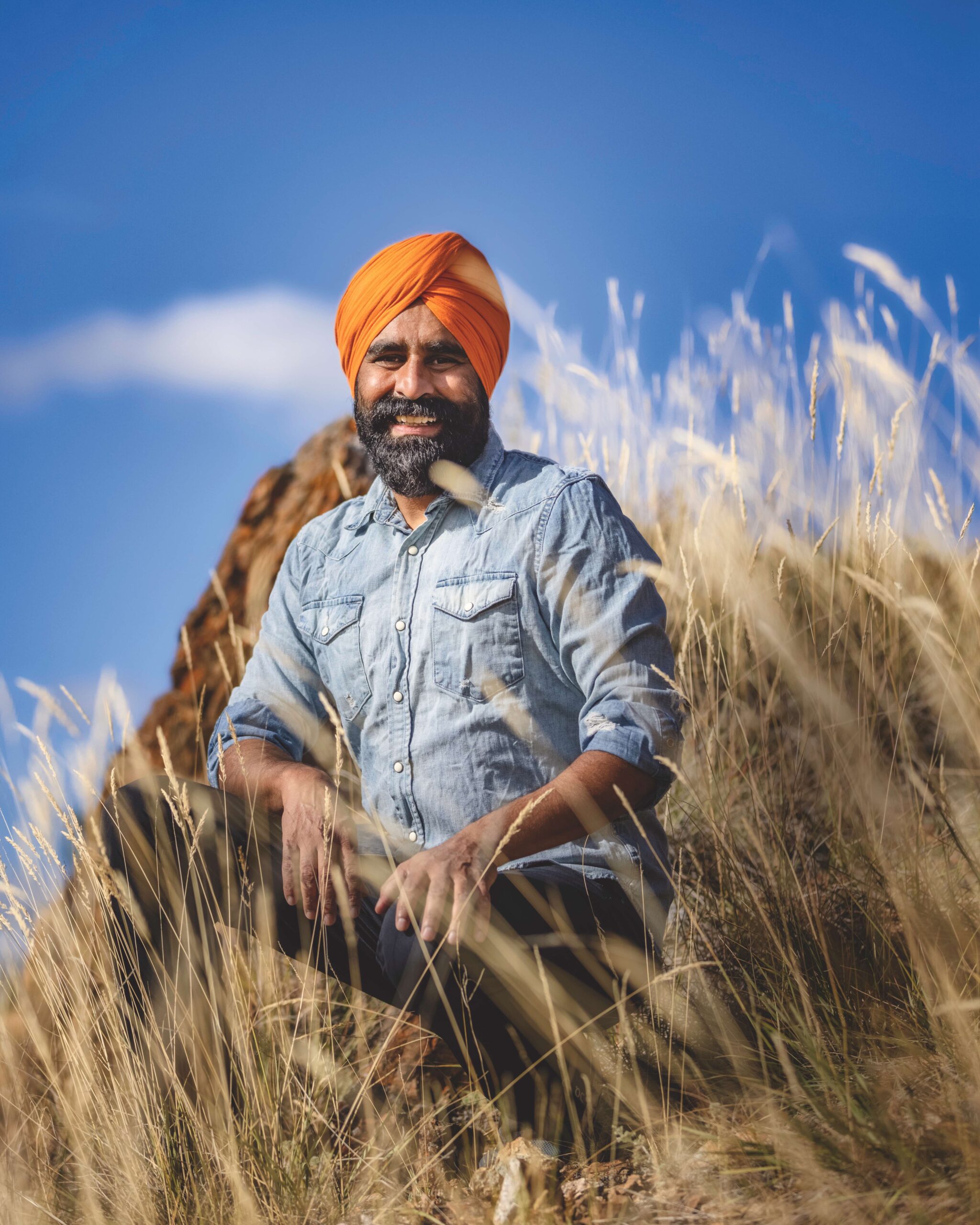Gurdeep Pandher knows the power of positivity. Since 2016, he’s been spreading messages of joy, hope and inclusivity, first through his viral videos and later in speaking gigs. Most of those videos, which have been hugely popular around the world, feature Pandher performing bhangra — a traditional Punjabi folk dance — outdoors in the breathtaking Yukon wilderness. (He currently has more than 45,000 followers on Instagram.)
Bhangra is connected to Punjabi culture, and it’s been a part of Pandher’s life since birth. He was raised in Siahar, a farming village in the Punjab region of South Asia, but moved to Canada in 2006 and became a citizen five years later. After living in a number of different Canadian cities, he decided to make a cabin near Whitehorse his home. He spoke to Alex Mlynek.
You may unsubscribe from any of our newsletters at any time.
Alex Mlynek: How were you first drawn to bhangra?
Gurdeep Pandher: When I was a child I saw elders, family members and people from the village dancing bhangra. I’ve known about this form of dancing for as long as I’ve known about the world. Seeing people dance made me feel happy, so when I became a teenager I decided to take classes to become a better bhangra dancer.
AM: What do you love about this dance form?
GP: Its positive and joyful nature. When I was learning bhangra in Punjab, my instructor would say, “If you do your moves correctly but you’re not doing them happily, then that’s not bhangra dancing.” It’s a requirement in this dance form to be joyful — not just from the smile on your face, but to be joyful from your heart.
Bhangra helps me send positivity and joy to the world, but it also helps me with my own mental health. When I’m feeling down or when things are not going well, bhangra dancing provides me with a lot of happy therapy to recover, reset my mood and find my joy.
AM: How do you define joy?
GP: For me, joy means you are having a feel-good moment. You are not worried or anxious. Instead, you feel grounded and stable. Joy is your home.
AM: What was life like in Siahar?
GP: My family farmed for many, many generations. Siahar is predominantly a farming community. They were growing wheat, rice, sugar cane, maize and many kinds of vegetables.
AM: What was it like to move to Canada?
GP: I had a vision of Canada as a country where everyone lived in harmony. But when I came here, I figured out that the situation was slightly different. First, I had a very thick accent so it was hard for people to understand me. Then I became more aware of Canada’s colonial past. I realized that it’s not all perfect here — that discrimination and racism exist. Although I also met many cool people. My first memories were seeing the mountains in Whistler, B.C.
AM: Why did you decide to start sharing your bhangra videos?
GP: My original goal was just to show to my local community here in the Yukon what I’d done during the day. But very soon I noticed that my videos were attracting a lot of attention. I was surprised. Then I became more aware of the power of sharing dance through social media. And so I became more consistent about finding a purpose and sharing it.
I became even more passionate when COVID-19 started. The World Health Organization declared COVID-19 a global pandemic on March 11, 2020. On that day, I decided to make one video every single day to spread hope and positivity.
AM: Why do you think your videos are so popular in Canada and around the world?
GP: The combination of bhangra and the Yukon is an interesting one. You can easily imagine someone dancing bhangra in Vancouver or Toronto, but not in the Yukon. It’s unexpected. Only 40,000 people live here, and there’s not much diversity. Then you have the natural beauty of this area and the fact that my videos focus on uplifting people.
AM: You are Sikh. Can you tell me how bhangra connects to Sikhism?
GP: This dance form doesn’t have any connection with Sikhism as a religion, but it does have a connection with Sikhism as a culture. You don’t find people dancing bhangra while performing any religious thing, but you will find people dancing bhangra when there’s a non-religious gathering happening — like a wedding or birthday party. After harvesting wheat crops, our people used to dance bhangra to celebrate and show gratitude to the land.
AM: What does your faith give you? How does it serve you or help you?
GP: Sikhism originated around 600 years ago. When it started as a religion, our society was divided into a caste system. Sikhism is based on three principles. The first is equality and treating everyone with respect. The second is treating the entire human race as one and not making distinctions between different kinds of people. And lastly, generosity. In Sikhism, we also see nature, or different elements of nature, as relatives. For instance, we consider air as guru, meaning “teacher,” water as “father” and earth as “mother.”
I try to bring these values forward through my dance form. For me, positivity is not just for fun. It’s not just entertainment with some music. It encompasses inclusivity, equality and being one with nature. Positivity is all of these things put together.
AM: Humans have a wide range of emotions. Is there a time to be sad or to be angry?
GP: That’s a beautiful question. When I talk about positivity and joy, I don’t mean that we have to suppress our other emotions and only seek joy. It’s okay to be reflective or sad — everybody goes through those moments of grievance. Those emotions can teach you a lot about yourself. But at some point during your day, you should make the effort to be joyful again.
More on Broadview:
- This environmental advocate leads youth through small actions and big ideas
- How Herbie Kuhn became Canada’s most famous chaplain
- She felt disconnected from Christ. Outdoor church brought her back.
AM: What else do you enjoy doing besides bhangra dancing?
GP: I like to go skiing, hiking and cycling. I socialize whenever I can. I love going into schools. Although I’m now more focused on the dancing world, I still sometimes get invited to schools to teach children. I have a great connection with them. They want me to come to their classes every day.
AM: You must be a fun teacher!
GP: (Laughing) I get a lot of hugs.
AM: Nature is important to Sikhism. And there you are, living in such a beautiful part of Canada.
GP: I live in a cabin out in the wilderness of the Yukon. I chose to live in a place where I can be close to nature every time I open the door. When we connect with nature, it means we are connecting with the ultimate source. Nature is our greatest healer. It grounds your anxieties and uplifts your spirits. Whenever I’m going through a down moment, I come back into the lap of nature and I smile.
AM: Have you connected with any of the Indigenous nations on the land that you are living on right now?
GP: For one week, I stayed in Old Crow, which is a community in northern Yukon, almost close to the Arctic Ocean. I danced bhangra with their chief, Dana Tizya-Tramm, and gave bhangra workshops. After that, there was an instant connection because music and dance are universal languages. When I was walking in the streets of Old Crow, people would just start dancing in front of me. It was so, so wonderful.
I also danced with people in Champagne and Aishihik First Nations. And I stayed on their land for many days too in southwest Yukon. I actually have a video where a person from that community is speaking Southern Tutchone, his Indigenous language. And he encouraged me to talk in my native language. That was a very powerful moment.
***
This interview has been edited and condensed for length and clarity. It first appeared in Broadview’s June 2022 issue with the title “Dancing for joy.”
Alex Mlynek is a writer in Toronto.














